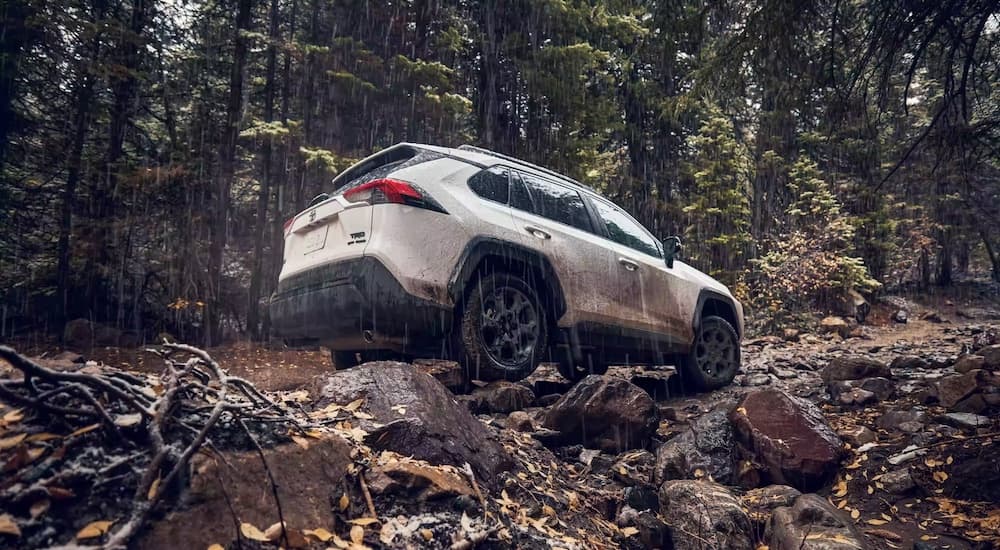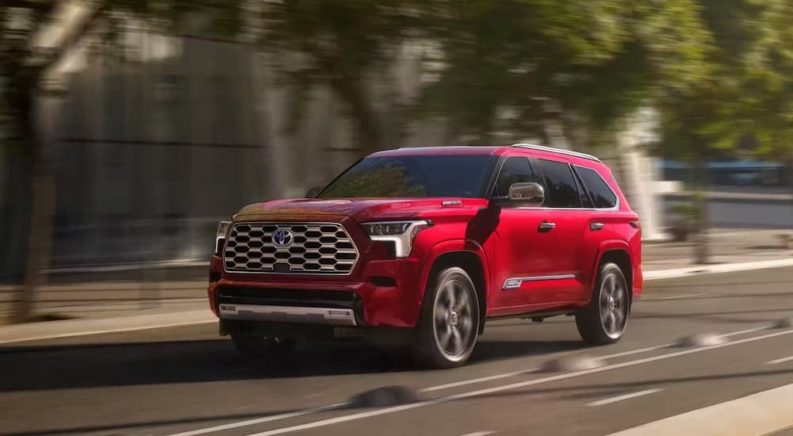Whether you’re someone who likes to do all of the work on your vehicle yourself, prefers to have a certified expert handle it all, or falls somewhere in between with a combination of both options, it’s vital that you know how and when to take care of things for your car. When looking into any Toyota SUV service, the most important thing is to know what the maintenance schedule for your vehicle looks like so that you can stick to it. It can be easy to assume that the service schedule is just a way to get money out of you, but it really is the best way to keep your vehicle running at its best.
Today, we’re going to take a look at what routine service and maintenance look like for a Toyota SUV so you can get a sense of how much of this you can easily do at home. With that in mind, we’ll also talk about how proper service (or improper service) can impact things like the warranty coverage you have on your vehicle. There’s nothing quite like the satisfaction of doing repairs or maintenance on your own vehicle, but it’s important that you do it properly and protect your investment in your Toyota SUV.
Get to Know Your Service Schedule
The most important thing you can do to get the most from your vehicle is to properly maintain it. The foundation of proper maintenance is the service schedule for your vehicle, which is provided by the original manufacturer. While every car has its own service schedule, most of them look pretty similar because they all generally have the same information. That being said, you always want to look at the schedule for your particular car, truck, or SUV and stick to it.
Today, we’re going to take a look at the schedule for the 2020 Toyota RAV4. The RAV4 is the best-selling Toyota SUV in America, so I figured it’s a good one to use as an example. Most Toyota SUVs are going to have the same sort of schedule for you to stick to, though there can be minor differences between them. If you have a hybrid model or something with a very different powertrain, however, then that can impact the kind of work that needs to be done. Similarly, models with four-wheel drive will need additional inspections and service.
Two things worth noting: the schedule is based on mileage and time––whichever comes first––and these are cumulative. In other words, if you hit 10,000 miles, but you’ve only had the vehicle for 10 months, then you still need to take care of the maintenance tasks for 10,000 miles or 12 months––don’t wait another two months. Also, at 20,000 miles or 24 months, you should be doing the tasks for both 5,000 miles and 10,000 miles. Some higher milestones can require quite a lot of work as these add up. Let’s quickly go over what you need to do to take care of your SUV.

Every 5,000 Miles or 6 Months
This is the shortest interval you should go between maintenance and includes:
- Check the driver’s floor mat
- Inspect and adjust all fluid levels in the RAV4
- Inspect the wiper blades to see if they need to be replaced
- Rotate the tires
- Visually inspect the brake pads and discs
You can see these are pretty simple; just take action if anything needs to be replaced during an inspection. If you’re particularly hard on your vehicle or drive on a lot of dirt roads, then you should also do the following:
- Inspect ball joints and dust covers
- Inspect drive shaft boots
- Inspect the engine air filter
- Inspect steering linkage and boots
- Replace the engine oil and oil filter
- Tighten nuts and bolts on the chassis and body of your RAV4
You’ll also need to replace the motor oil if you tend to make a lot of short trips in cold temperatures or if you spend a lot of time at low speed or while idling. If you use your vehicle for a delivery service or for ride-sharing, for example, then you will want to change the oil at this milestone rather than later. That’s something a lot of people overlook, and it’s very hard on a vehicle to drive it in this way without properly servicing it.
Every 10,000 Miles or 12 Months
In addition to the previous interval, you should also:
- Replace the engine oil and oil filter
Obviously, if you meet the conditions above for heavy use or driving on dirt roads a lot, then you’ll do this anyways. But if you don’t use your vehicle in a way that requires oil changes every 5,000 miles or 6 months, then you’ll need to do it at this interval. You should also check your motor oil once each month to ensure it still looks good and that you have plenty of it in your engine, topping it off with the same type of oil as needed between changes.
Every 15,000 Miles or 18 Months
As long as you’re performing the previous types of service at the aforementioned intervals, then this is the next point you should keep in mind. In addition to what we already talked about, at this point, you should also inspect all of the following:
- Ball joints and dust covers
- Brake lines and hoses
- Cabin air filter
- Drive shaft boots
- Engine coolant
- Exhaust pipes and mountings
- Radiator and condenser
- Steering gear
- Steering linkage and boots
As you can see, that’s a pretty big list of things to inspect––some of them overlap with what you’ll already be inspecting if you use your RAV4 in rough conditions, but not all of them. Along with the previous inspections we talked about, any issues that are found during this type of service need to be addressed immediately. That means loose connections should be tightened, any damaged or worn parts should be replaced, and fluids should all be in excellent condition or changed as needed.
Every 30,000 Miles or 36 Months
In addition to the things that need to be inspected every 15,000 miles or 18 months, there are a few more items to inspect at this milestone, including the following:
- Automatic transmission fluid cooler hoses and connections
- Automatic transmission for signs of leaks
- Fuel lines, connections, and hoses
- Fuel tank cap gasket
From here on out, these milestones essentially repeat themselves, with a few additions at certain greater points in mileage or time. For example, at 60,000 miles or 72 months, you also need to have the drive belts inspected with the other parts to see if they need to be replaced. All of this information is provided by Toyota––and every other manufacturer for their own vehicles––so it’s easy to keep track of and see what you need to do.

Visiting a Service Center vs Doing the Work Yourself
According to Toyota’s warranty information, “maintenance and repair services may be performed by you or by any automotive service provider you choose.” Doing the work on your vehicle yourself won’t void your warranty, as long as the work is done properly and you keep a record of when it was done––hang onto receipts and other information for parts you buy in case you need to prove when you did the work and what parts you used. That being said, if you do the work yourself and make a mistake that damages your vehicle, then the warranty won’t cover fixing what you did, so keep that in mind.
Keep a Maintenance Log
No matter who works on your vehicle, having a proper record of what was done and when is very important, both for protecting your warranty and for ensuring the highest resale value possible for your Toyota. While most manufacturers provide you with a schedule of some sort, Toyota actually offers Maintenance Guides for its vehicles that present the service schedule as a Maintenance Log or checklist, so you can easily see each milestone: what needs to be done and check it off as you take care of it. If you prefer having someone else do the work for you, then you can still use this log to track what is done, but it is perfect for all of us who love working on our vehicles. Just make sure you take your time and know what you’re doing so that each task is done properly and will ensure your Toyota stays in the best condition possible.

